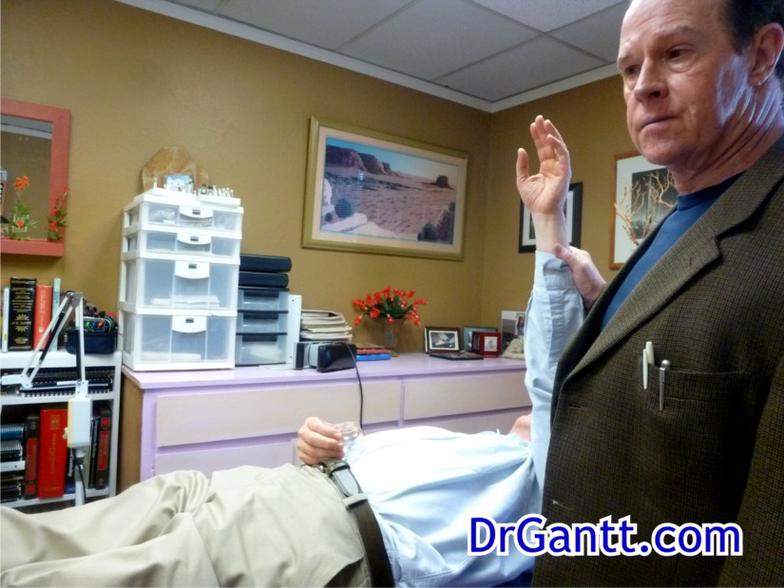"We're committed to helping you" Dr. Roc Gantt, OMD
916-349-9223
Dr. Roc Gantt ® 5500 Madison Ave. Suite A Sacramento,CA 95628 (916) 349-9223 site map
Sacramento Natural Health Clinic
Muscle Response Testing
Diagnosis is the first step in treating a problem. Symptoms are what patients identify. A symptom can have many causes. Diagnosis is about identifying the underlying cause(s) that generated the symptom(s). Muscle response testing is a tool allowing the practitioner to identify underlying problems and solutions by communicating with the patient's body.
Muscle response testing is an application of applied kinesiology based on the concept that for the body to repair itself, it must know innately what the problem, cause and solution are. The body repairs itself all the time - when we rest and when we sleep. So if a communication link can be established that the practitioner can use to access this information, the practitioner can learn what the problem, cause and solution are. When the brain knows, it can communicate instructions almost instantaneously using the nervous system (electrical) to the rest of the body.
Muscle Response Testing
"My
–Stephanie .
As an example, the brain can send muscles a signal to act associated with items it does not want (like poisons and allergens). That response has been identified to be a weakening of the muscle. The practitioner can test items in question to find which generate the muscle response. A skilled practitioner can communicate a lot more than I've shown here but the principal is the same. Diagnosis comes from the body innately understanding the problem, cause and solution. The practitioner's role is to ask the right questions and listen.
It is important to note that the issue is not how strong the patient is and resisting and trying to keep the muscle strong is not important to the practitioner communicating with the body. It is a process of your body communicating to the doctor what is going on. Very strong and very weak patients can be diagnosed using surrogates.
Western medicine uses very different diagnostic approaches. This makes muscle response testing a very powerful complement to western diagnosis. In those cases where no western test is available, it offers a diagnostic window.
As an example, the first step in treating allergies is identifying them. This is harder than one might think. Western medicine has no effective way to test for food allergies. It does test for environmental allergies with a test where the skin is scratched with the substance. Inflammation indicates an allergy.
Dr. Gantt uses an alternative from Eastern medicine – Muscle Response testing (MRT). Muscle Response testing works on the principal that the finger tips are very sensitive to the presence of nearby allergens even without direct contact. They transmit that presence through the nervous system to the brain within nanoseconds. The brain then sends signals to all the muscles in the body that makes them measurably weaker temporarily (in preparation for an allergic response). The difference in muscle strength is significant enough to be observable by Dr. Gantt.
Standard Muscle Response Testing
Standard Muscle Response testing uses two people, the doctor and the patient. It can be performed with the patient standing, seated or laying on the exam table. In the office, Dr. Gantt generally has the patient lay on the exam table. The patient lays face up on with the right arm laying comfortably at their side palm up. The left arm is extended perpendicularly to the table palm facing the body. The doctor presses on the left arm measuring the muscle strength. Next the substance to be tested is placed in the finger tips of the patient's right hand. The Dr. again presses the left arm to measure muscle strength. When the strength is equal, it indicates no allergy. When there is a noticeable decline in strength, it indicates an item the patient is allergic to.
The patient can easily observe the test results. They are dramatic enough that someone new to this test, may want to run some experimental tests using known allergens and non allergens. "At first I was convinced that the Dr. pressing harder sometimes than others to produce these results. I had to see enough tests to be satisfied that the difference was my muscles and not the doctor.” patient Bill Schlack
This is under development. More pictures are coming. Call the doctor if any concept is not clear or you have any questions.


